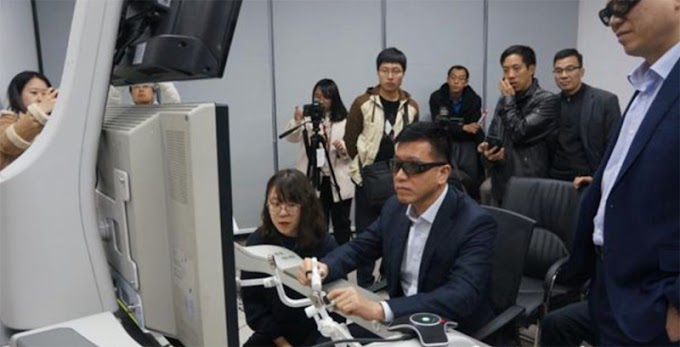Smartphones have
become part and parcel of our life. An average person spends 5.4 hours a day on
their phone, and 44.81% of the world's population owns a smartphone. Modern-day
communication is based mostly on smartphones. It need not be mentioned that streaming
platforms have become a major part of entertainment nowadays. All these things
are made possible by an extremely complex piece of hardware inside every
smartphone, called SoC. Which is similar to the processor of any laptop
or a desktop computer. Let’s go to the journey
of how the SoCs are made?
Where the SoCs are kept?
System
on a chip is a complete system of related computing hardware that is used for
different tasks of a smartphone, a detailed description can be found here. Every component in any computing platform is created through a set of
extremely complex processes. That not only require time to build but also takes
lots of investments. Let’s take an example to
make things easier to understand.
The below picture is
a torn down apple iPad-2,
 |
| Torn down apple iPad-2 credits: Computer organization and design, by David A. Patterson & John L. Hennessy |
typically we can see the following things there:
1.
At the top is the capacitive
multitouch screen and LCD.
2.
To the far right is the 3.8 V, 25
watt-hour, polymer battery, which consists of three Li-ion cell cases
3.
The metal back of the iPad (with the
reversed Apple logo in the middle) is in the center
4.
In the center, is we think of as the
mainboard for SoC; they are often L-shaped
If we pay attention
to the L-shaped board there, we can see the large integrated circuit in the
middle, is the Apple A5 chip, the SoC package.
 |
| Apple A5 circuit board, credits: computer organization and design, by David A. Patterson & John L. Hennessy |
And after tearing down the IC
packaging we can see the most important things of concern, the SoC itself.
 |
| Apple A5 SoC, credits: computer organization and design, by David A. Patterson & John L. Hennessy |
Believe it or not,
this a few mm square chip consists of billions of transistors, which are the
basic building blocks of any computing device. Today’s
transistors are 3d transistors, sometimes they can be CMOS transistors or
sometimes FinFET, the new candidate, which fab lab like Intel or Samsung uses.
A typical example of a transistor may look like this,
 |
| FinFET, credits: researchgate.com |
and its length is nearly
10 to 20 nano metes.
How a transistor is created?
1.
The journey starts from ‘sand’,
you heard is right. Sand contains silica, which is the source of silicon, the
most important ingredient of a transistor. Silicon is one of the components by
which a transistor is created, there are others like germanium, etc. Due to
several useful properties, Si is used in fab labs.
2.
Sand is heated adequately so that by
some chemical reaction, a long cylinder (called ingot) of pure silicon is
formed. This silicon cylinder needs to be 99.99% pure, a minute amount of
impurity level could hamper its ‘semiconducting’
property, and thus cannot be used in a transistor. Then from the cylinder
circular wafer is cut precisely where the final circuitry (SoC) will be
inscribed.
3.
On the other, a team of brilliant
engineers creates the blueprint of an efficient and highly optimized in the
power-performance-area circuit (SoC, for example in this case apple A5). The
circuit is rigorously tested in different conditions and when found to be
according to the specification set, engineers shared the blueprint of the
circuit with the fabrication company where the silicon wafer (mentioned in step
2) is created.
 |
| Physical Circuit implementation of an SoC circuit (not A5) , credit: Wikipedia, under GNU license |
4.
In the meantime, the 99.99% pure silicon
wafer is tested for conductivity, purity, etc. and the wafer passes the test
are chosen for fabrication. Then the wafer is cut into several small
rectangular pieces, each piece will have an SoC circuit inscribed in it
shortly.
| Silicon wafer to small dice transformation, credit: Peellden & Nick Knupffer |
5.
As the lab has the complete blueprint
of the SoC, they prepare a suitable ‘mask’
to carefully make a copy of the SoC circuit. During the process, UV-light is
used extensively, which is used to inscribe the mask pattern on to the Silicon
rectangular dices. That’s
why sometimes it is called the photo-lithographic process. This step is the
most crucial, complex step and consists of several other sub-steps, which have
been skipped for simplicity.
 |
| To inscribe the circuit onto Silicon, these kinds of a mask is used to control UV light exposure, credits: Shigeru23 |
6.
Once the SoC circuit is inscribed on
to the Si wafer, each one of them is sent for automated testing so that its
functionality can be verified. In this step, many chips cannot pass and only a
percentage of fabricated chips are actually sent to the next step.
7.
In this step, metal wires are
soldered with the tested Silicon dice and covered with an appropriate package.
The packages are usually black colored that we see on any circuit board. In our
case, the package is labeled as ‘A5’,
which has been shown at the beginning. At this stage, the SoC chip leaves the
fabrication facility and starts its journey towards the circuit board
integration department.
 |
| First wire is attached with SoC & then packed into a black package, credits: Mister rf |
Conclusion:
We
have seen where an SoC is kept inside any smartphone or tablet. We have gone
through how a smartphone SoC is made? We have explored several steps of
fabrication for the same. The steps mentioned here are extremely complex and
not usually done by a single manufacturing company. Step 3 is usually done by a
separate group of people and requires months of cumulative efforts. That’s
why the whole procedure is extremely costly and is not suitable for a single unit
of a manufactured chip. The entire cost of production is distributed among
millions of chips so that any individual can pay according to their budget. I
hope that clarifies how an SoC is made?






0 Comments
All non-spamy comments will be visible